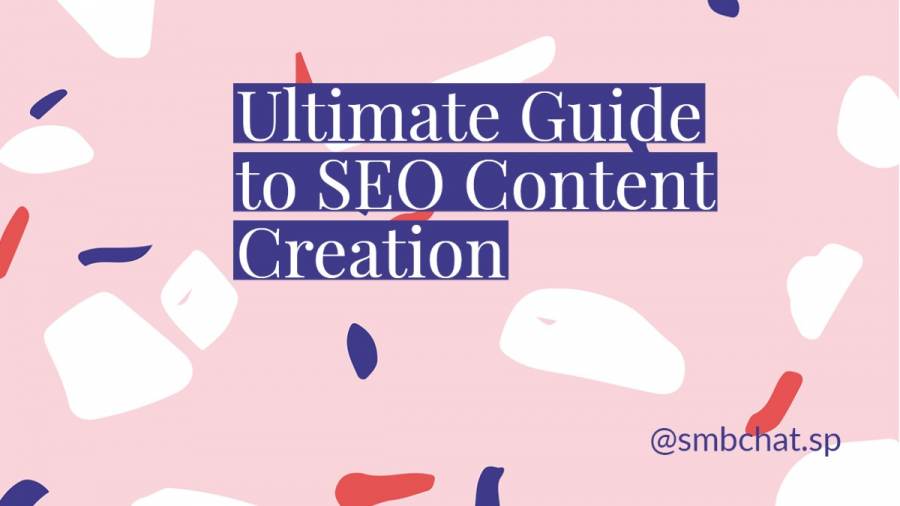On Your Marks, Get Set, Go!: 6 Technical Writing Examples Sure to Ignite Your Journey to Subject Matter Superstardom
Sure, you’ve already laid eyes on probably the best legal documents ever created, scoured through the most uncomplicated technical manuals in the history of manuals, and maybe even mulled over a few epic user guides.
But like most people, you’ve never really understood why technical writing—both as a craft and a discipline—even exists.
“Are all technical writers in the world really passionate about what they do?
“I mean, who, in their right senses, would rather spend time breaking down technical topics into digestible content than go for a Budweiser drinking spree?!”
“Can we all gang up and declare this writing style null and void as soon as yesterday!”
Jokes aside, technical writing is hard to define. It’s often slippery, always unexpected—but when you see it, you know it.
Good technical writing is focused and clear. It captures and holds the reader’s attention. It serves a distinct purpose: to elucidate, explain, and strip down complex topics down to their barebones.
But great technical content does something else too. The words themselves have a spark that makes them human. They function like a hook of a catchy pop song. Readers keep scrolling in order to scratch that impossible-to-ignore mental itch.
Does this sound a little woo-woo for the marketers out there who simply want to convey complex topics in a compelling, easy-to-grasp way? Maybe. But it’s totally doable. And these six phenomenal technical writing examples will show you how.
Relevant reading:
Everything You need to Know About Technical Writing.
Your Ultimate Guide on How to Create Technical Blogs.
Characteristics of Tecnical Writing.
3 Little-Known Ways Technical Writing Affects Your Bottom Line
#Example 1: How Banks Can Win New Small Business Customers
What: Whitepaper
Who: Vansonbourne
When the word “technical documents” gets thrown up in a conversation, all people talk about are things like instruction manuals, user help guides, step instructions, and so on. As for whitepapers, well…they get lost in the banter. Uh-oh.
Newsflash: Whitepapers are very much part of the technical writing process as all the other “hardy” forms.
And Vansonbourne, in close collaboration with Avoka, knew this from the get-go. Their ground-breaking whitepaper is a thing of beauty—exploring the topic of SMEs and digital banking in a way no formal document has ever done.
Why we love it:
- It’s incredibly in-depth and succinct (as all types of technical documentation should be)
- It speaks to the intended audience without coming off as overbearing or biased
- It epitomizes the spirit of close collaboration—technical marketing writing is only half as good as the brands behind it. One brand? Pretty good. Two or more brands? Spectacular!
The bottom line? Crafting technical content isn’t meditation or binge-watching—you don’t have to work in total isolation to achieve top feats. Liaise with a competitor like Vansonbourne did, and the rewards could be totally worth it in the long run. After all, two heads are always better than one.
Example #2: Navigate Slack With Your Keyboard
Who: Slack
What: User Instructions
When was the last time you experienced the good feels of a well-elaborated set of user instructions?
15 years ago when your dad brought home that unsightly, bunglesome CRT TV?
3 years ago when you shipped the then trending iPhone 11 Pro?
That aside, user instructions are not something you come across every other day. But when you do, you expect one thing and one thing only: simplicity of language.
No brand has ever composed user guides screaming bombastic and ambiguous words like “stuff”, “basically”, “chiaroscurist”, and the likes. They all hit the nail on the head—educating the target audience on a specific B2B product or service beyond reasonable doubt. And Slack is certainly no guest in this regard. Their piece of consumer technical writing deserves a round of applause, and then some.
Why we love it:
- It employs simple, everyday language through and through—Slack explains what keyboard shortcuts are, why they’re useful, and how users can implement them, all without sounding salesy or forceful
- It reels in helpful visuals to further edify the issue at hand—even a grade 5 dropout wouldn’t have trouble finding the said Slack keyboard shortcuts
The bottom line? Technical writing is best served hot, luscious, and with a touch of simplicity. Remove the latter and the whole thing crumbles, leaving your target audience worse for wear. Before you know it, they’re ditching your digital product for the next best offering in town.
Example #3: Fruit and Vegetable Consumption Tied to Mental Health
Who: BMJ Open
What: Medical study
User manuals, company documents, and business proposals are all good examples of technical writing. They’re slippery to the novice eye, tepid for the average reader, and a real brain candy to expert audiences. But medical studies? Now these are on a whole new level of “technical”, and this BMJ study bears testament to that fact.
Word by word, line by line, you can tell the authors of this technical masterpiece, led by Dr. Saverio Stranges of the University of Warwick Medical School in the UK, weren’t kidding around. Heck, they even surveyed 14,000 adults just so they could come up with accurate findings.
Why we love it:
- Straightforward, precise, and fluff-free—what more could you possibly ask for in a piece of technical writing?
- It doesn’t beat around the bush with a vague culmination; the conclusion is, quite simply, unequivocal—consuming five portions of fruits and vegetables a day is the optimum amount of lowering the risk of death from any cause
The bottom line? If a piece of technical writing isn’t concise and full of meaty takeaways, then it’s best left unwritten. ‘Nuff said.
Example #4: 2020: The Year that Wasn’t
Who: Etsy
What: Annual Reports
Definitions aside, annual reports are probably the only area where authors can flex their technical writing skills to the max.
At its core, an annual report is an in-depth, comprehensive overview of a company’s achievements and financial statements from the previous year. Part a formal document and part an informal piece of writing, an annual report edifies where a business’s blog falls short; it clarifies where other company resources barely scratch the surface.
You’d think you’ve stumbled upon pieces of excellent writing until you lay eyes on this Hi5 annual report. Calling it a technical masterpiece would be a grave understatement.
Why we love it:
- Friendly, well-illustrated icons, bright “oomphy” colors, and hard statistics all in one package? Someone please tell me I’m dreaming (hint: it’s all real)
- It leverages real quotes, staff pictures, and in-bound links to perfection—the year 2020 (as it were for Hi5) literally unfolds in front of your very eyes
The bottom line? It’s impossible to go wrong with infographics, statistics, and photos. Craft a technical piece of writing with zero illustrations? That’s a solid 6/10. Add in some beautiful graphics here and there while maintaining the same level of impeccable writing? 11/10 baby!
Example #5: Hunt Club and Happeo—a Tech-Enabled Love Story
Who: Happeo
What: Case Study
Aah, case studies. Five bucks, you’ve never really envisioned them as a key part of the technical writing process—but hey, they very well are, so…case closed.
In this blog post-like-case study, Happeo immediately opens with a quote from the client, then dives into a compelling heading: “Technology at the heart of Hunt Club’s strategy.” So if you’re investigating Happeo as a solution, this would immediately pique your interest—prompting you to want to know why the client chose to work with Happeo in the first place.
That’s all? You bet not!
For every paragraph, there’s a real customer quote sprinkled in in all its glory. Later down the page, this piece of technical writing also dives into the “features that changed the game for Hunt Club,” giving Happeo a chance to highlight some of the platform’s most salient features.
Why we love it:
- It tackles the subject matter entirely from a customer’s perspective—after free Budweiser drinks, there’s nothing your clients love more than technical content that’s written in their own voice.
- It pulls in the intended audience in a way no other piece of technical writing ever has—free-flowing language, succinct paragraph, and well-placed customer quotes combine to supreme effect
The bottom line? Neglect your target audience mid-way through your writing or make them feel any less of a hero in the story (even for a bit), and you’ve lost the war. As for the battle, you lost it the moment you whipped a boooring title.
Example #6: Content Marketing Proposal
Who: Nusil
What: Business proposal
I know. A business proposal was probably the last thing on your mind when you were brainstorming technical writing examples. And that’s alright, because—let’s face it—it’s the most “untechnical” piece of content there is. But guess what? It’s as much a piece of technical content as user help guides, troubleshooting guides, installation guides, and the like.
That said, not all business proposals are created the same. Some are an utter borefest while others…well, others are are composed with the artistry of a singer and the nimbleness of a craftsman. This content marketing proposal by Nusil is one of those.
Why we love it:
- It’s professional-looking and customized to the last word—talk of plug-and-play business proposals!
- It includes interesting copy that’s plucked right off the echelons of history—nine times of ten, this proposal would impress any decision maker
The bottom line? It doesn’t matter if your piece of technical writing was crafted by Shakespeare himself. It doesn’t even matter if it utilizes Grade 3 grammar. If it isn’t value-packed and oozing nuggets from every corner, it’ll be ditched. Simple as that.
Does Your Technical Writing Live Up to Your Actual Work? Let Us Help You Join the Missing Pieces Together
Far more than break down complex topics to digestible content, your pieces of technical content can explain, articulate, and legitimize. Even better, they can drive qualified leads deeper into your sales funnel. Just by showcasing subject matter expertise in the simplest, most creative way possible.
Now, why would you settle for less?
Make Zoey Writers a part of your team today, and we’ll immediately get down to the business of creating words that proudly live up to what you deliver—and prevent your target audience from being able to see what you do in quite the same way again.
It’s all 100% achievable, with us on board.
Check out out our technical writing services or reach out to us today—let’s make this dream a reality!
Photo by Antonio Uquiche on Unsplash: Thanks Antonio: )

















